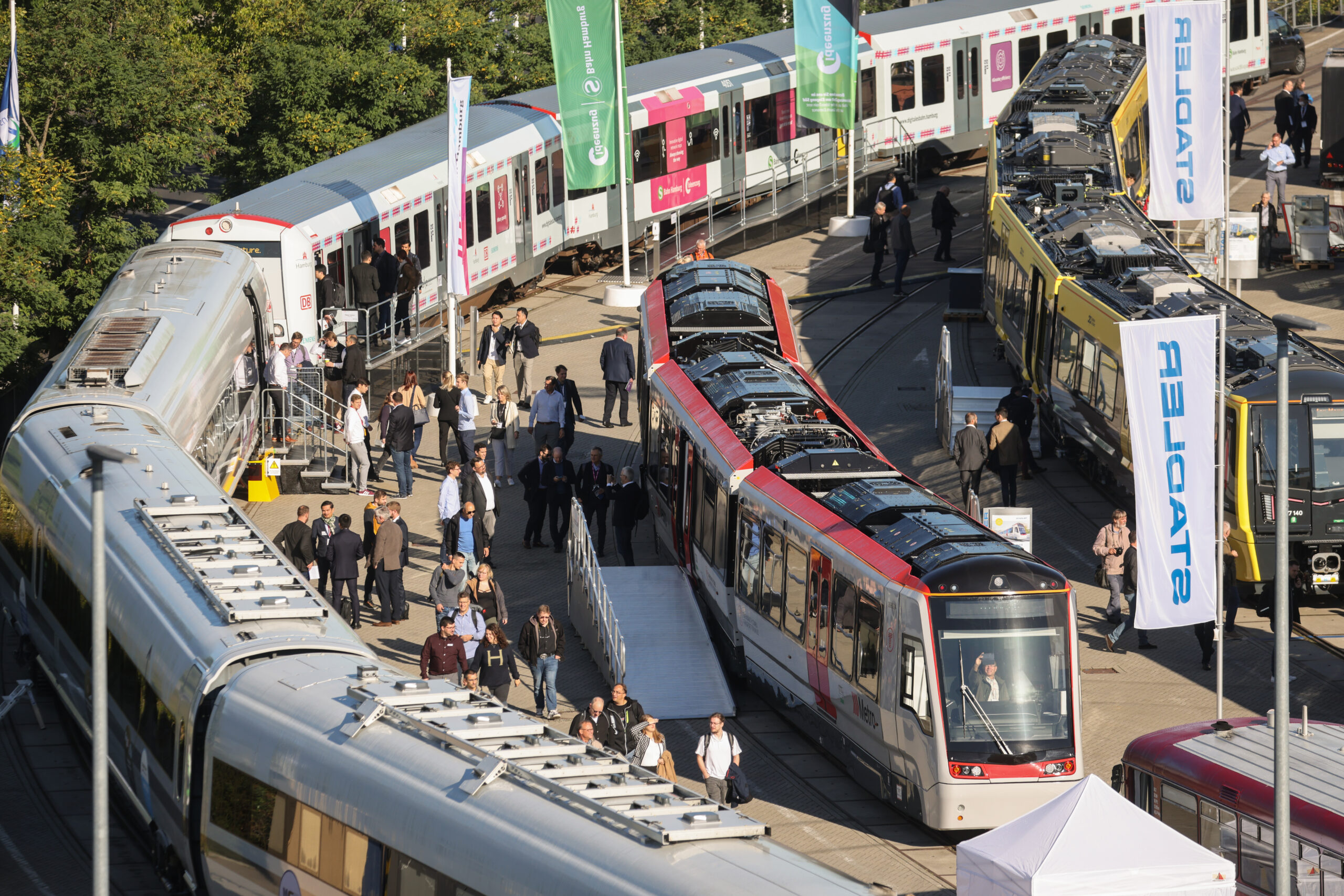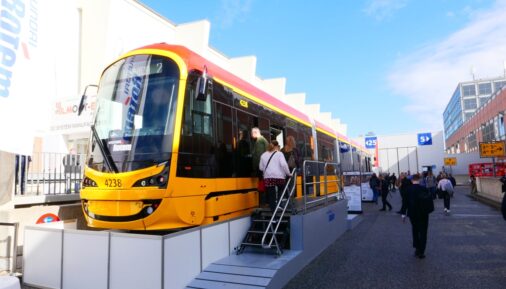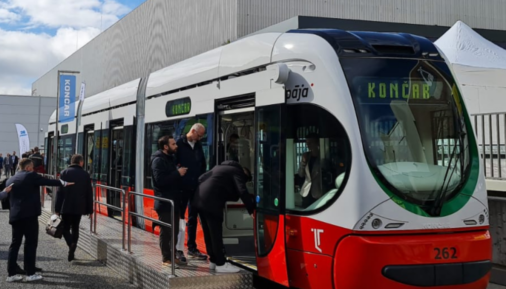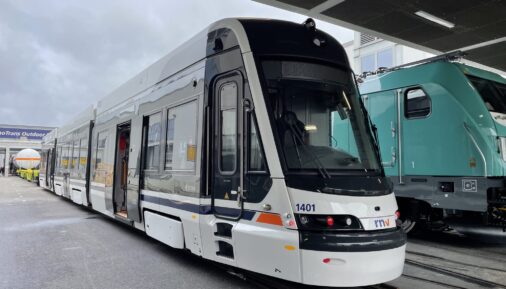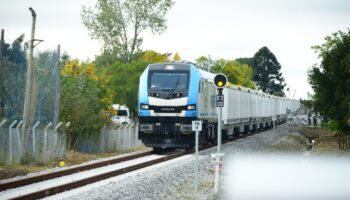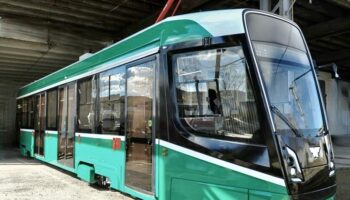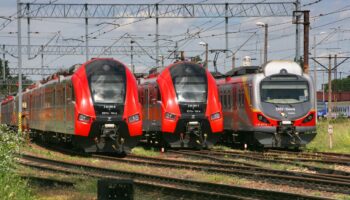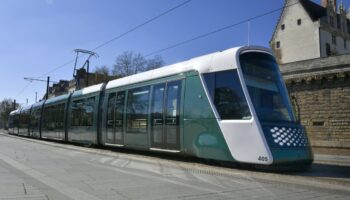Germany: Stadler, Siemens Mobility, Bozankaya and a number of other market players presented their trams and metro trains at the InnoTrans exhibition in Berlin. Three novelties were exhibited among them.
IPEMU hybrid urban train by Stadler
One of the significant novelties at InnoTrans was the IPEMU four-car train equipped with batteries. Liverpool’s transport authority asked Stadler to provided7 trains with hybrid traction from catenary and batteries as part of a 2017 contract for the supply of 53 Class 777 trains for the Merseyrail commuter network.
Especially for these purposes, lithium-titanate (LTO) batteries with a total capacity of 320 kW were placed under the body of the trains, and a battery cooling system was placed on the roof. As a result, IPEMU is able to cover a distance of 55 km on a single charge. At the same time, the charging time of the train from the DC third rail is less than 15 min. The battery is designed for over 10,000 charging cycles. The manufacturer notes that the transition from battery traction mode to catenary is smooth and almost imperceptible to passengers.
IPEMU can accommodate 486 passengers and includes 184 seats. The maximum speed in the operating mode via the third rail is 120 km/h, in the autonomous mode – 100 km/h, acceleration rate – 1.1 m/s². The car bodies are made of extruded aluminum profiles. The train is equipped with six 350 kW traction motors.
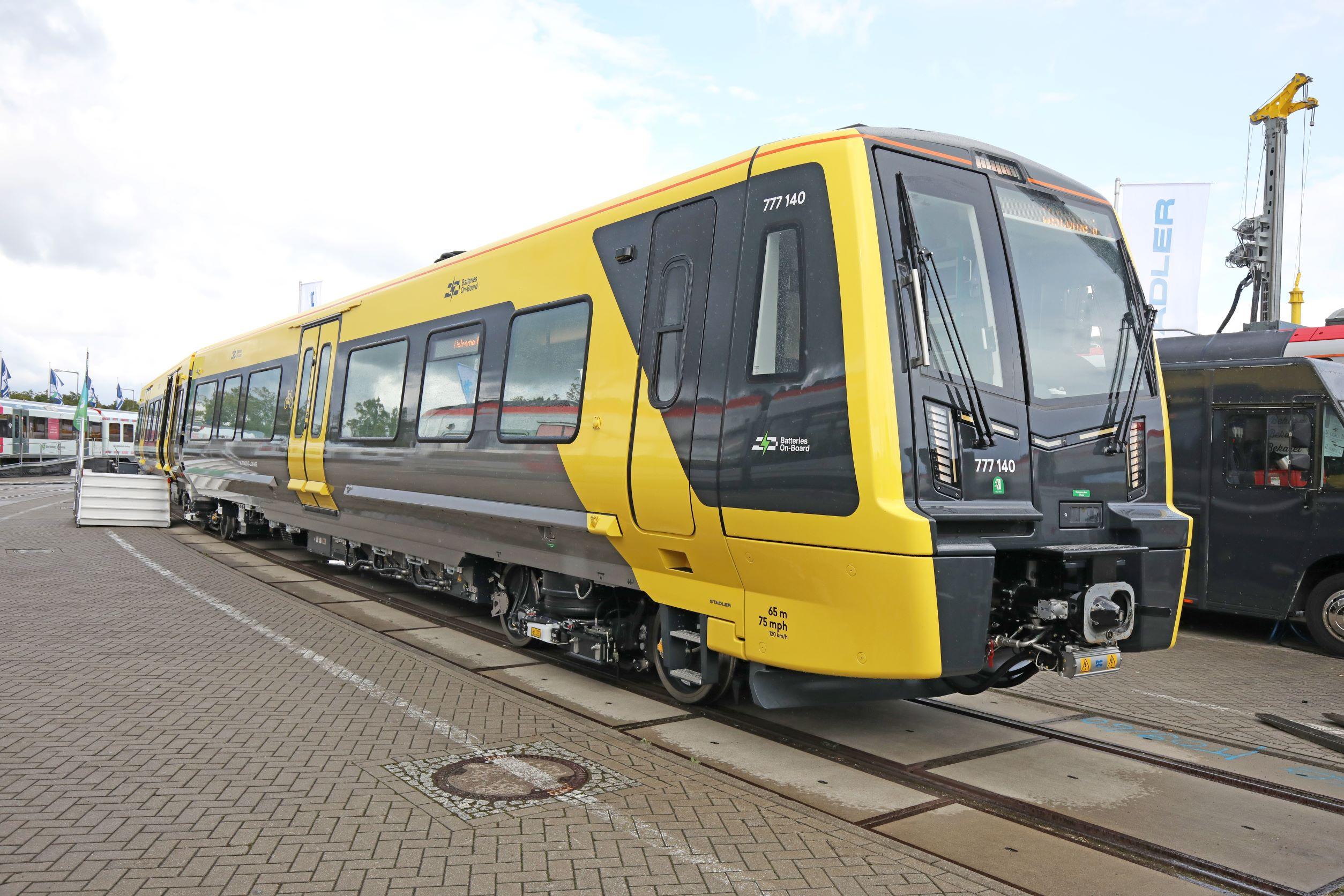 Class 777 IPEMU urban train by Stadler. Source: railway-news.com
Class 777 IPEMU urban train by Stadler. Source: railway-news.com
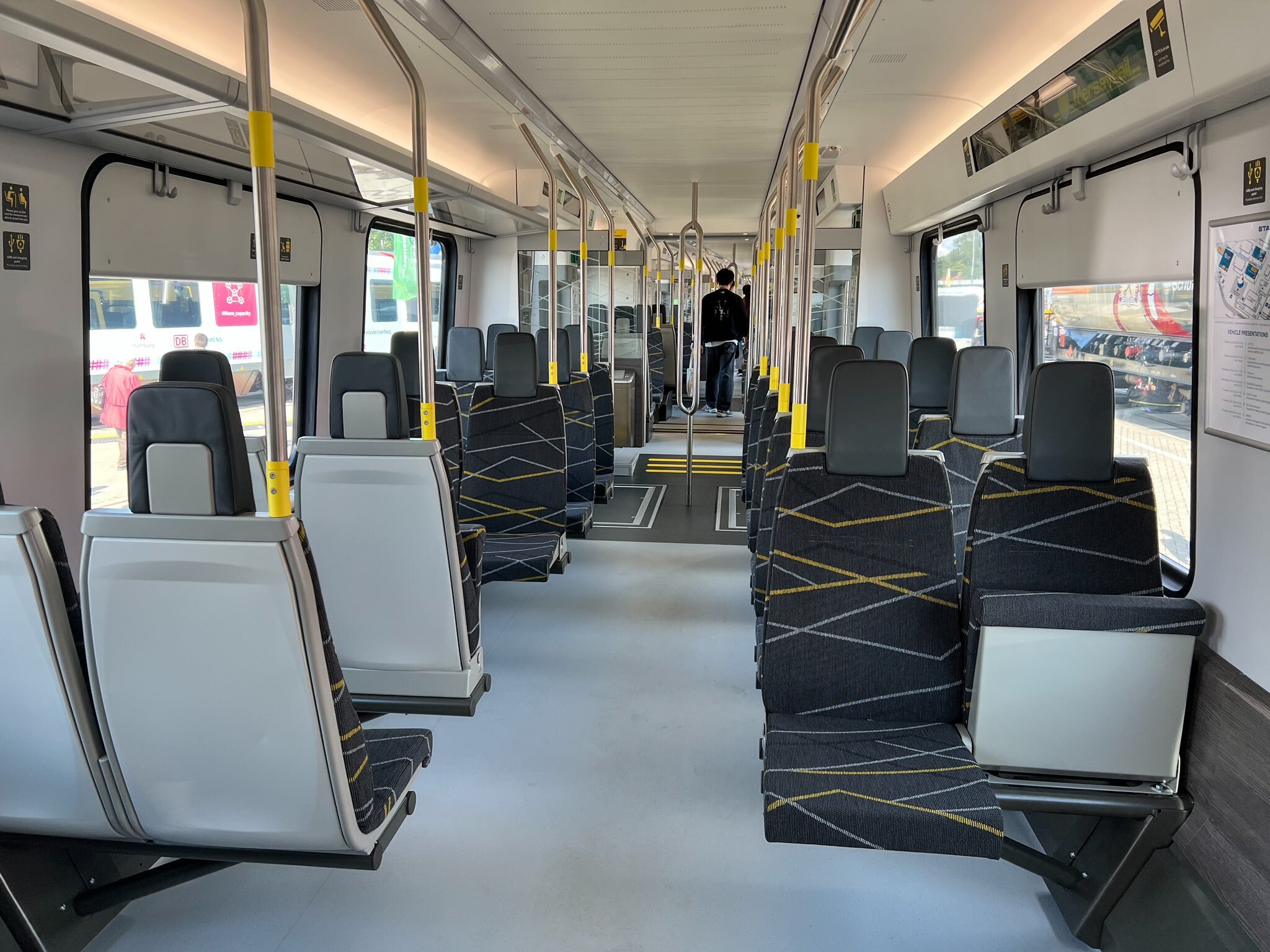 Interior of the Class 777 IPEMU urban train by Stadler. Source: gleis3a, twitter.com
Interior of the Class 777 IPEMU urban train by Stadler. Source: gleis3a, twitter.com
Citylink tram-train by Stadler with traction batteries
Continuing the battery rolling stock exhibition, the Swiss manufacturer has unveiled one of 36 three-car Citylink tram-trains (Class 398 in the UK) ordered by the TfW operator in 2019 for South Wales. Citylink tram-trains are mass-produced at the Stadler’s site in Valencia, Spain since 2011, but this vehicle has been equipped with Li-Ion batteries for the first time. The declared operational range is 10 km. At the same time, battery traction is supposed to be used on non-electrified sections of the network with a length of about 2 km. Part of the electrical equipment for Citylink was supplied by ABB, whereas Technotrans from Germany manufactured battery cooling systems.
Citylink for TfW can reach a maximum speed of 100 km/h and pass curves with a minimum radius of 25 m. The three-car 40 m train has a passenger capacity of 252 people, including 126 seats. There are 3 doors on each side of the tram-train. The driver’s cabs are placed in both head cars. The body of the vehicle is made of stainless steel. It is scheduled to put 36 such trams in operation next year.
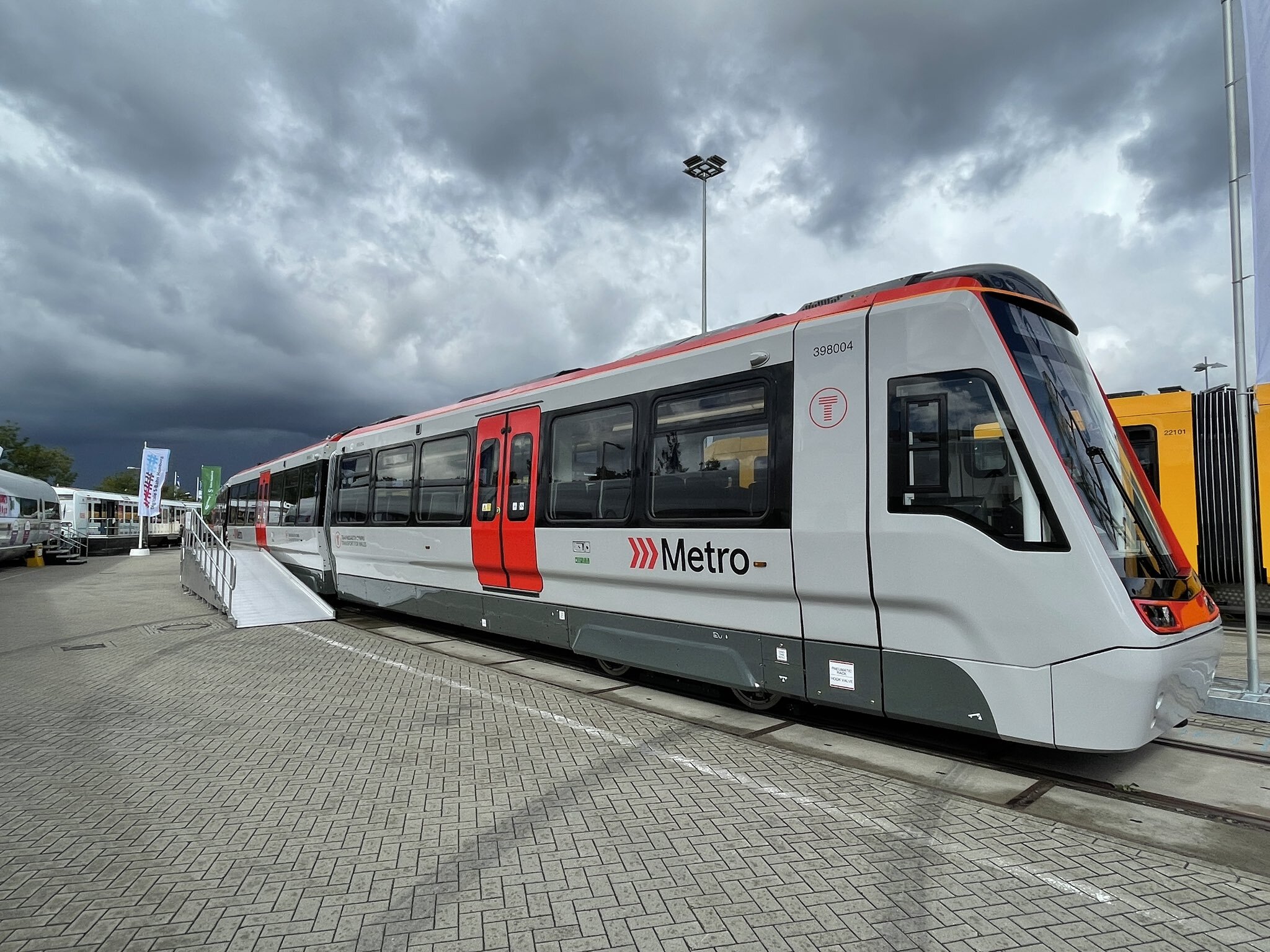 Class 398 Citylink tram-train by Stadler. Source: Ben Jones, twitter.com
Class 398 Citylink tram-train by Stadler. Source: Ben Jones, twitter.com
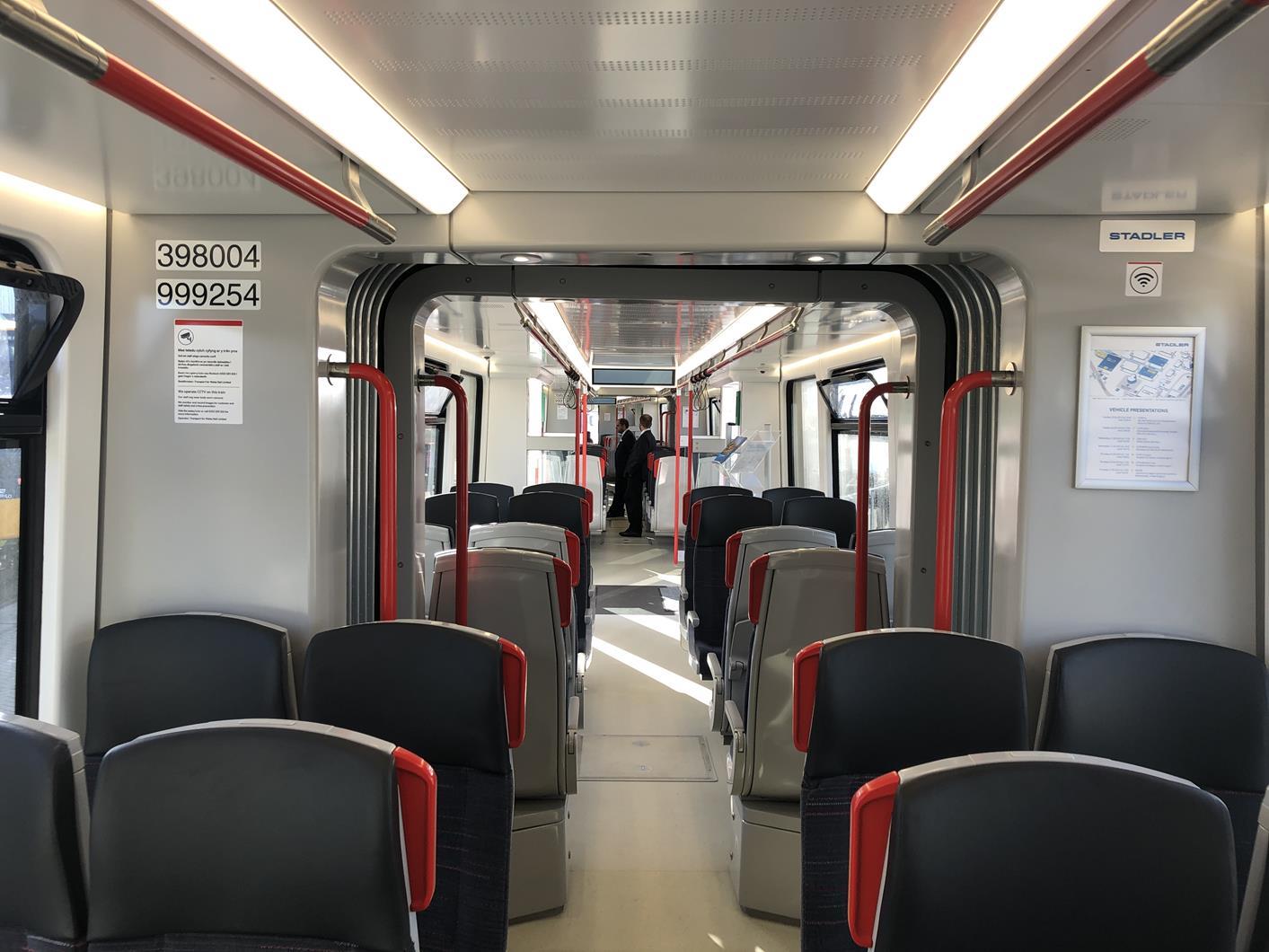 Interior of the Class 398 Citylink tram-train by Stadler. Source: railwaygazette.com
Interior of the Class 398 Citylink tram-train by Stadler. Source: railwaygazette.com
Stadler also exhibited an ST15 five-car tram of the TINA platform. The producer was awarded a contract for the supply of 14 such vehicles at the beginning of 2020 from HEAG Mobilo, the transport company of Darmstadt, Germany. Also, in 2021, the operator exercised an option for the other 11 units. The tram uses a new bogie design, which improves its maintainability and optimizes the use of passenger compartment space. In addition, the rolling stock is equipped with an air conditioning system that uses carbon dioxide as a refrigerant. The ST15 series tram is 43 m long and can accommodate 272 people, including 101 seats. It is designed to operate at a maximum speed of 80 km/h. The first batch of 14 trams will enter the HEAG Mobilo’s fleet in 2023.
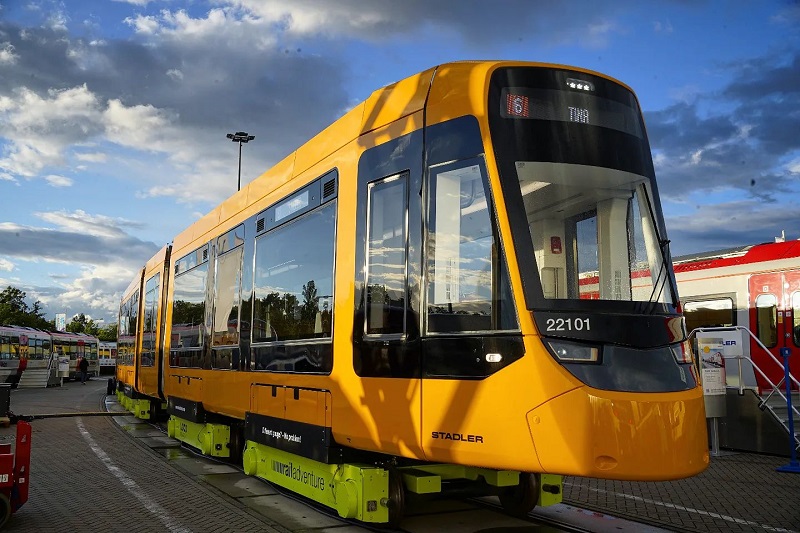 ST15 TINA tram by Stadler. Source: zughalt.de
ST15 TINA tram by Stadler. Source: zughalt.de
X-Wagen metro train from Siemens Mobility
The international debut of the X-Wagen six-car metro train produced by Siemens Mobility and ordered by Wiener Linien took place at InnoTrans. The corresponding contract was signed in 2017 and included the delivery of 36 such trains in Vienna, Austria and their maintenance for 24 years. As to Siemens M, X-Wagen can operate both under the driver’s control and in a completely GoA4 unmanned GoA4 mode. One batch of the trains should replace the V-Wagen cars, which were also produced by Siemens and have been in operation in Vienna since 1972. The other batch should be commissioned for the new U5 automated line, which is planned to be put into operation in 2025. The train is claimed to be able to carry up to 928 passengers thanks to its lightweight design and is also made up of 90% recyclable components. The maximum operating speed of X-Wagen is 80 km/h.
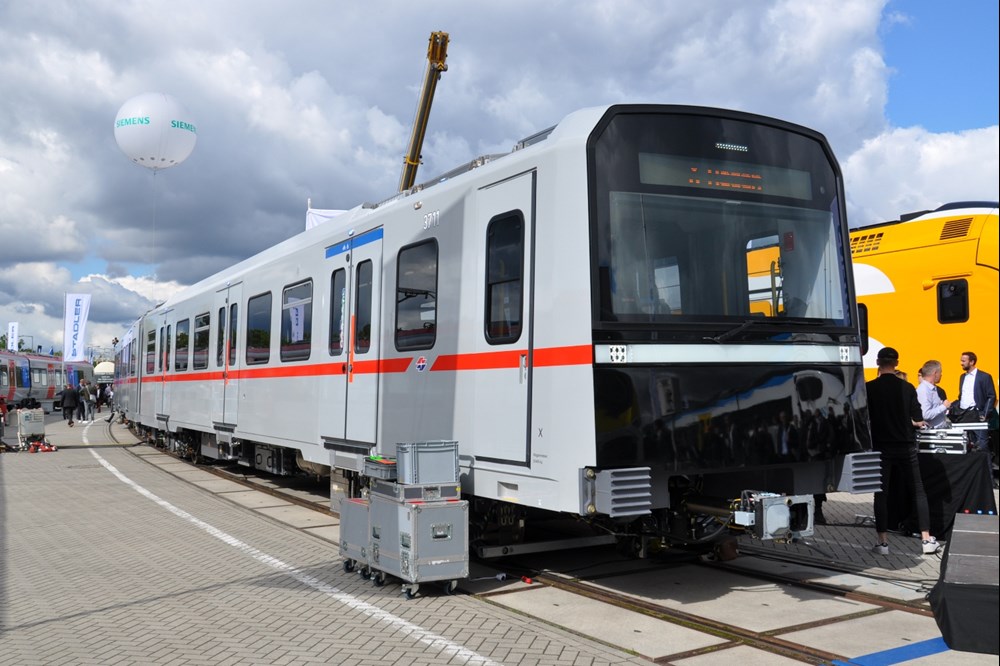 X-Wagen metro train by Siemens Mobility. Source: transport-publiczny.pl
X-Wagen metro train by Siemens Mobility. Source: transport-publiczny.pl
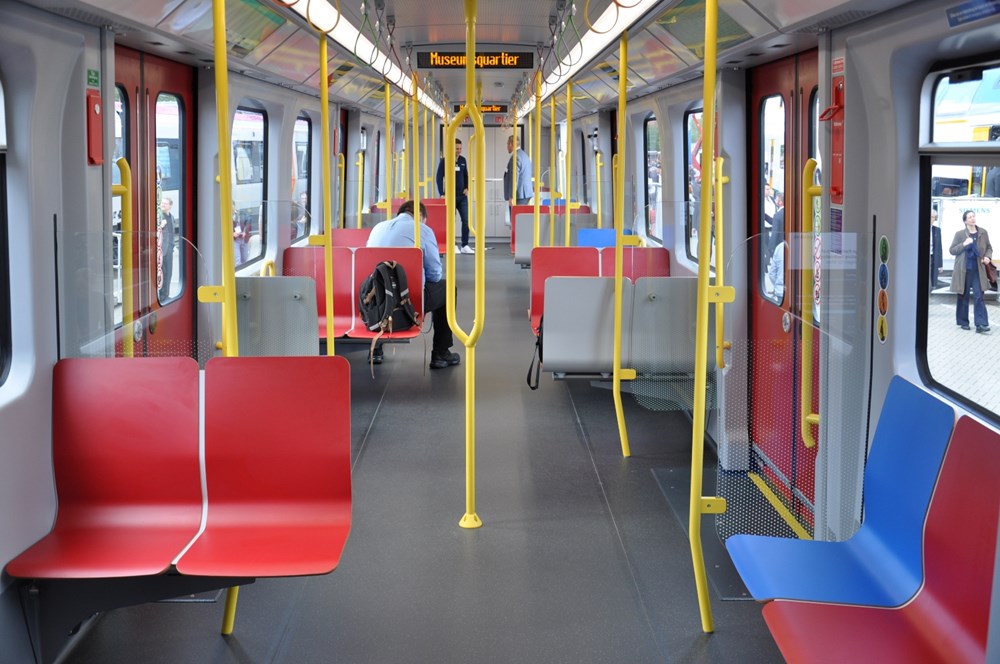 Interior of the X-Wagen metro train by Siemens Mobility. Source: transport-publiczny.pl
Interior of the X-Wagen metro train by Siemens Mobility. Source: transport-publiczny.pl
Also, Siemens Mobility showed the Avenio GTA8 low-floor four-car tram for Nuremberg, Germany. Its passenger capacity is 218 people, including 62 seats. Maximum speed is 70 km/h. The first GTA8 is planned to be put into commercial operation at the end of December, and in total, under the contract concluded in 2019, the city should receive 12 such trams. In addition, it is possible to exercise an option for 75 trams more.
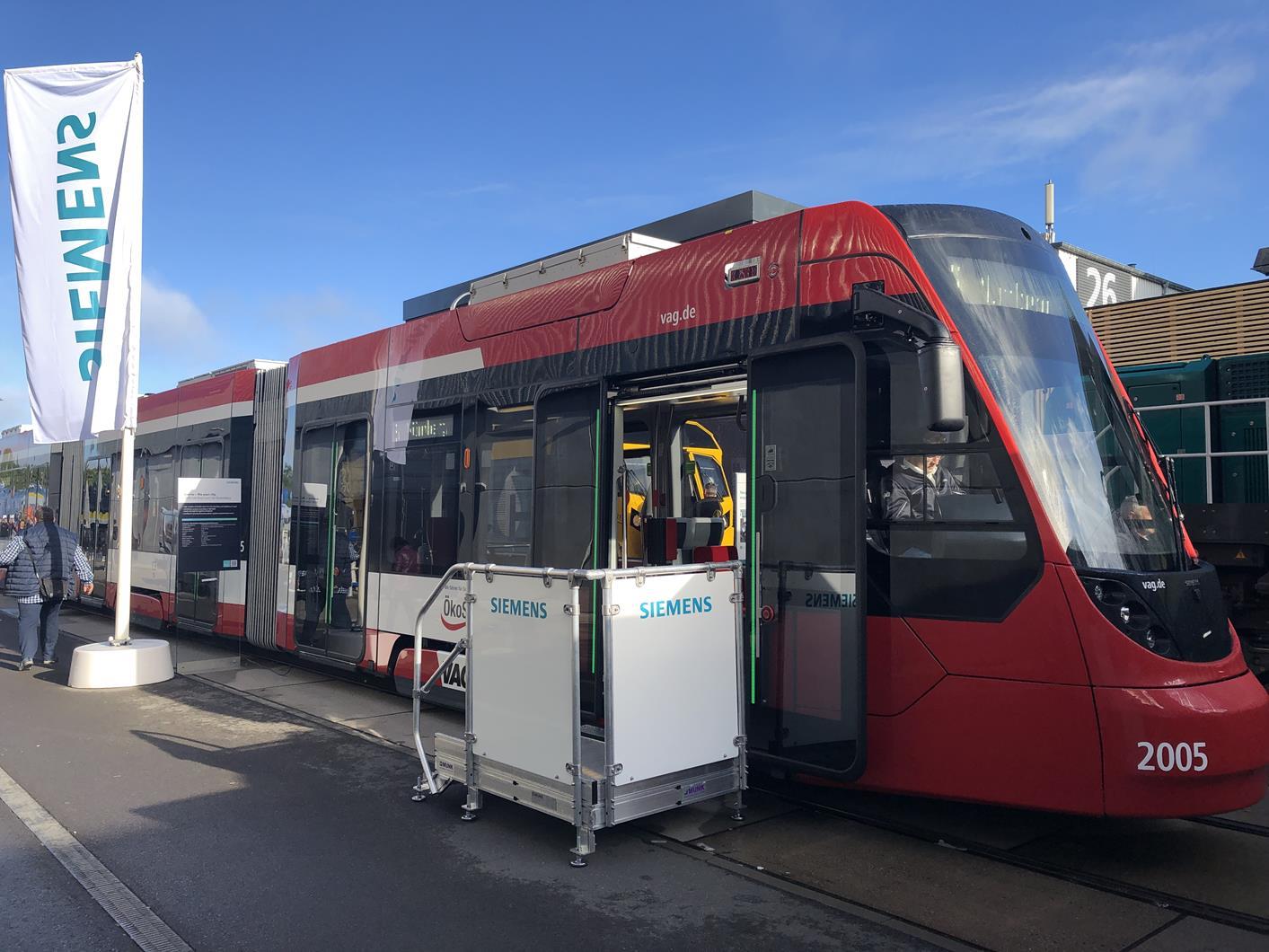 GTA8 Avenio tram by Siemens Mobility. Source: railwaygazette.com
GTA8 Avenio tram by Siemens Mobility. Source: railwaygazette.com
In addition, one of 4 Bombardier’s Class 474 three-car trains upgraded by Siemens Mobility for partially unmanned GoA2 operation was shown by Deutsche Bahn. In September, such vehicles were put into commercial operation on a 23 km section of the Hamburg S-Bahn system with a deployed 5G network.
Battery-powered tram by Bozankaya
The Turkish manufacturer presented its battery tram for the Romanian market. According to Bozankaya, the autonomous range of this five-car model is from 63 to 70 km, which is a world record for trams. A contract for the supply of 40 such trams (16 units as a firm order and 24 more as an option) for more than €80 mln was signed with the Romanian city of Timisoara in 2019. The tram was put into operation in June this year.
The tram is 29.9 m long and can accommodate 200 passengers (48 seats). The vehicle is equipped with three bogies, its maximum speed is 70 km/h, and its acceleration rate is 1.1 m/s². The rolling stock is manufactured at the Bozankaya plant near Ankara in Turkiye.
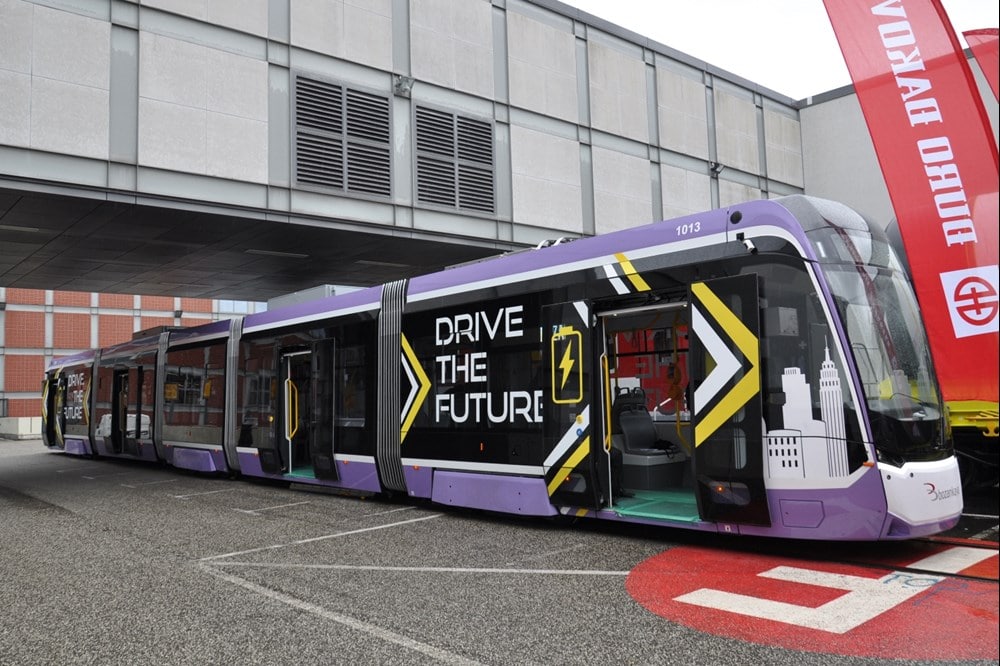 Battery-powered tram by Bozankaya. Source: Bozankaya A.Ş./linkedin
Battery-powered tram by Bozankaya. Source: Bozankaya A.Ş./linkedin
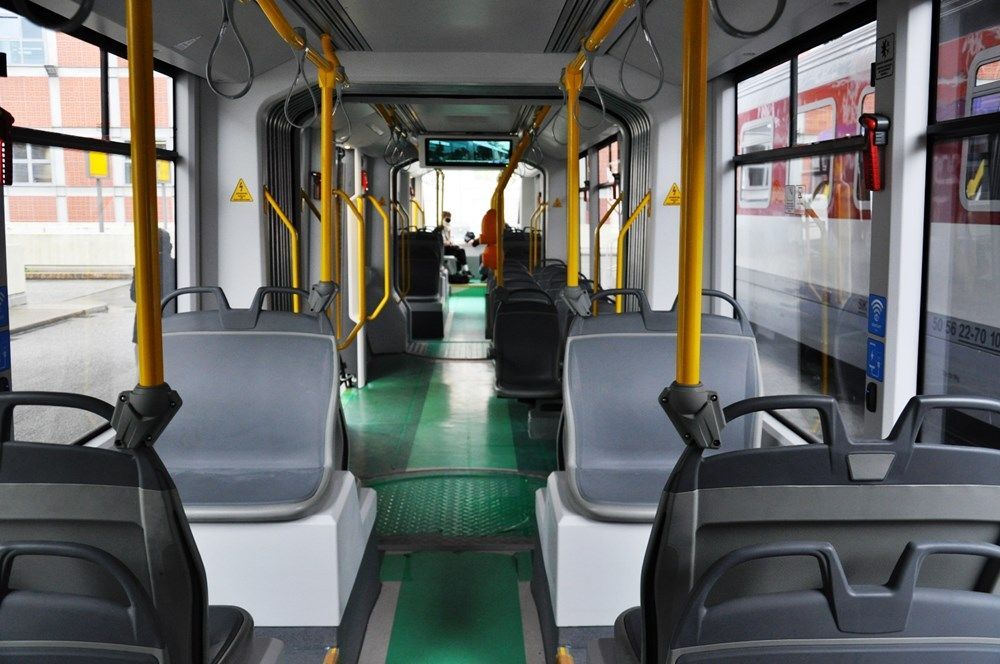 Interior of the battery-powered tram by Bozankaya. Source: Bozankaya A.Ş./linkedin
Interior of the battery-powered tram by Bozankaya. Source: Bozankaya A.Ş./linkedin
Trams from other manufacturers
Hyundai Rotem, Končar and Škoda Group also unveiled their vehicles at InnoTrans.
Thus, the Warsolino low-floor five-car tram was produced by Hyundai Rotem as part of a 2019 contract for the delivery of 123 trams in various modifications for Tramwaje Warszawskie, the tram network operator of Warsaw, Poland. The main feature of Warsolino is the possibility of a 120 m autonomous run thanks to supercapacitors produced by Medcom. In addition, the Hyundai Rotem exposition included a hydrogen tram mockup, its prototype is planned to be presented in 2023.
In turn, the TMK 2300 LT low-floor three-car tram by Končar also has the ability to run autonomously, but already at a distance of up to 500 m. It was produced for the Latvian city of Liepaja under a contract for the supply of 14 such vehicles. At present, 13 trams have already been manufactured.
The ForCity Smart 36T three-car tram was exhibited by Škoda Group. The 1,000 mm gauge vehicle was produced under a contract for the supply of 80 ForCity Smart 36Ts of various lengths (30.5 m, 40 m and 60 m) for the RNV transport administration of the Rhine-Neckar region in Germany. The unveiled tram has a total passenger capacity of 178 people with 72 seats. It can reach a maximum speed of 80 km/h. These trams are to be delivered to operate in the German cities of Mannheim, Heidelberg and Ludwigshafen.



